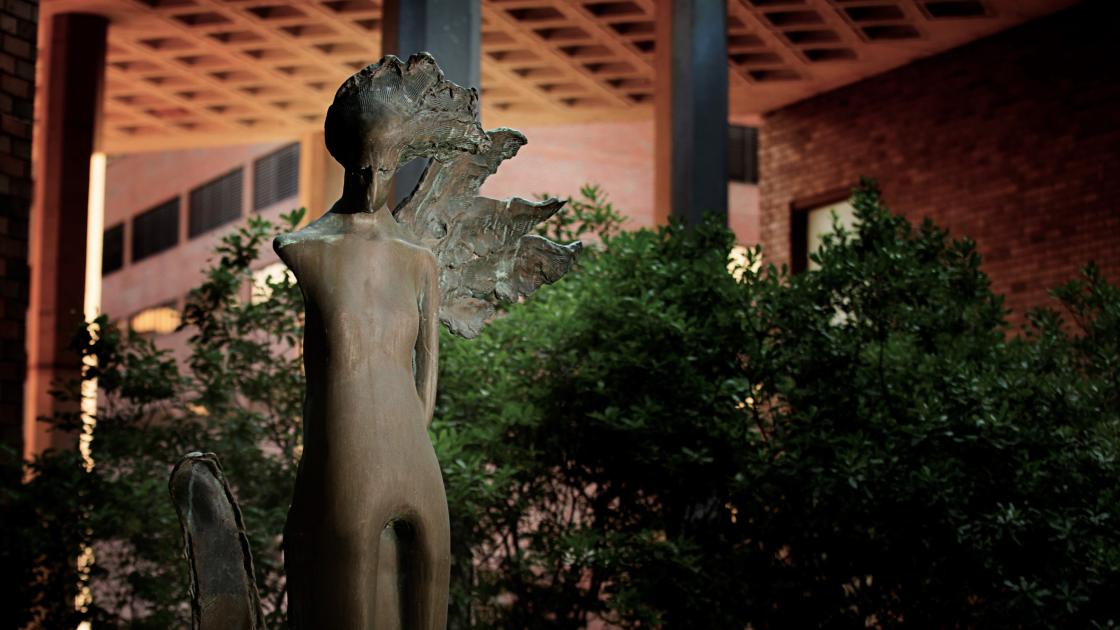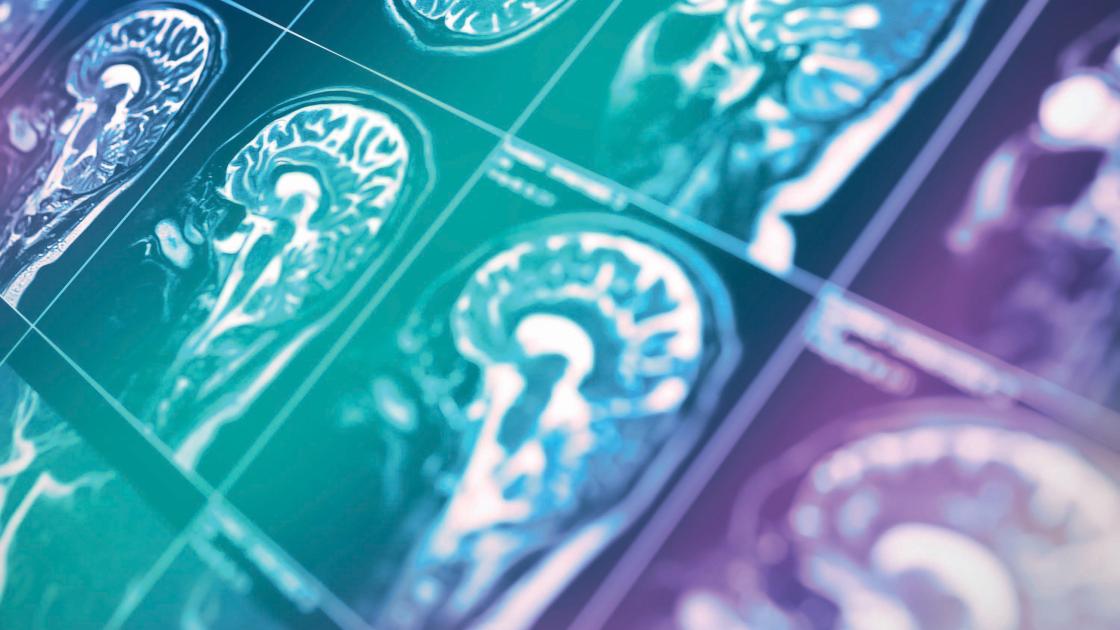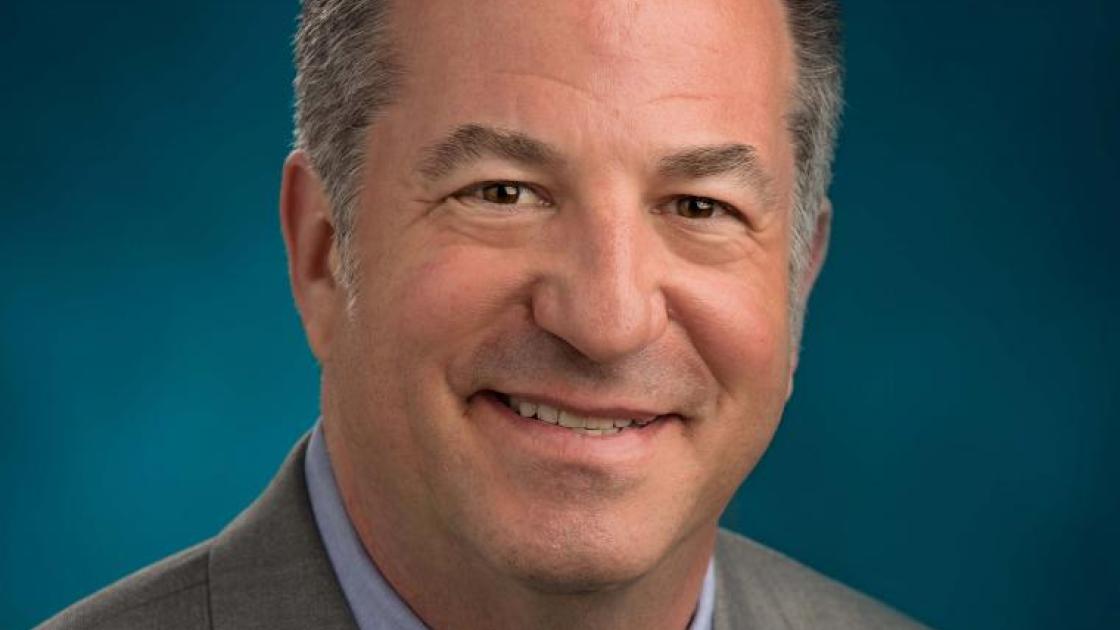
Institutional Memories
In the early ‘70s, Dean Richard Moy and recruiting officials had advertised for instructors at a new “medical school without walls.” The opportunity to create something original within the American medical education system appealed to both experienced professionals looking for change and young risk-takers ready to stretch their wings. As the School of Medicine evolved from an inspired idea to a well-respected institution, there were scores of dedicated people hired as the glue to hold the great experiment together. Three of the founding faculty are still here today, teaching students, conducting research and collaborating with administrators and staff to continue the school’s noble missions. They share some memories about the formative times at SIU.
J. Kevin Dorsey, MD, PhD
Dean and Provost Emeritus; Professor, Department of Medical Education and Department of Internal Medicine (Rheumatology). Hired July 1, 1973, as a biochemistry professor
Dr. Dorsey had the unique experience of seeing the medical school develop from different perspectives: researcher, faculty member, learner, clinician, administrator and its third dean, 2001-15. He recently served as interim president for the SIU Systems.
Martha Ellert and Kevin Dorsey review the teaching points of a patient’s CT scan in Carbondale in 1989.
What was it that first interested you in research? All academic jobs at the time were people who were researchers first, and they also taught. Universities were looking for researchers in certain areas of expertise, and you taught graduate students in the subjects where you were familiar.
You said once you’d been teaching here a while, you envied the students. Why? I liked what they were doing more than what I was doing. The classroom work was just so relevant to the study of medicine. It wasn’t two years of ‘sit there while we talk at you, you take tests, you must pass.’ You were seeing patients from the get-go. The students in the 1973 charter class were having clinical experiences. I went with them when they were meeting with a neurologist in Carbondale doing patient rounds and it was just so engaging. I was 30 years old, and I’d been in school a long time, in a lot of different places and this was not like anything I had ever seen. I taught the first two years and enrolled in the third.
That was when the academic curricula took three years. What was that like? I thought it was great. There were no summers off. You did 36 months straight; 12 in Carbondale and 24 in Springfield. What was I going to do in the summer, mow lawns? It was fine by me; you just plowed through. Those early classes skewed a little bit older than the average age of the classes now, too.
Were there times you felt like a pioneer in Carbondale? Oh yeah. I want to pay respect to my colleague and friend Hurley Myers. He was a very innovative teacher and an early adapter of using technology in the classroom. In the ‘70s I recall him using a heart sound simulator so that we could all sit around with stethoscopes to our ears, plugged into this machine as he described what those sounds meant.
I like what I do, that’s why I’m still doing it.
Shortly after I went back to Carbondale in ‘83, the first Apple Macintosh computer came out. He’d seen me teaching and I was using a modified deck of cards to respond to students’ questions as we’d run through the history and physical of a patient case. This was around the time that Howard Barrows’ teaching with problem-based learning was taking off.
Hurley and I got together with a computer programmer and formed a little company called DxR in the Small Business Incubator on campus and came up with something that I’d describe as a patient on a disk, with heart sounds, pictures, vitals. We’d picked up on some of Howard’s ideas for medical education, and we added technology and the things sold world-wide.
As dean, you had a lengthy and successful run that was second only to Dr. Moy, for longevity. To say I’m second only to Dick Moy, well, there’s only been four of us and Jerry just started in 2016. When I took the job, I told myself that if I’m not in double figures, what am I doing? Cultural impact does not come quickly. You just have to plug away at it. I enjoyed it. I’m not interested in retiring. I like what I do, that’s why I’m still doing it.
Donald Caspary, PhD
Professor of Pharmacology. Hired December 1, 1972
An SIU Distinguished Scholar, Dr. Caspary’s research has focused on age-related hearing loss, central sensory plasticity, tinnitus and sensory pharmacology, anatomy, physiology and neurochemistry. The Academy for Scholarship in Education named him one of the Outstanding Teachers of 2009. The NIH has continuously funded his research for more than 40 years.
(1982)
What’s your secret to academic longevity? That’s an easy question. If I couldn’t get my grants funded or my papers published, I wouldn’t still be doing this. Science is a fairly competitive game, and if your colleagues allow you to compete and you have wonderful people working with you in the lab, it’s kind of hard to stop.
Do you have a fond memory of a red letter day in the lab? Yes. There have been a couple of times when I’ve seen something that I postulated that no one else has ever seen. And then you repeat it and you see it again and you go, ‘Holy crap, this is really wonderful.’
In this business you also get rewarded when you see people cite your work. That’s always nice. And if it’s something that you wanted to do and you think it’s important, no matter what other people think, you should go ahead and do it. If you think it’s worthwhile, it probably is.
I never make value judgments on whether someone’s research is important or not, because you just don’t know what is going to turn out to be important. If you had told me, ‘I want to investigate submicroscopic particles in tobacco plants because they cause little warts and that’s interesting to me,’ I’d say that’s not interesting. But the first virus ever discovered was the tobacco mosaic virus, by some guy who was curious about it about 120 years ago. So you just never know.
You’ve had NIH funding for more than 40 years. Were champagne corks popping when that national funding award letter came in? No. The year before I got my first NIH grant, I got a Deafness Research Foundation grant, and my emotional response for that little DRF award — it was only fifteen or twenty thousand dollars — meant more to me than when I found out about the NIH grant. Somebody was willing to send me money to do something! I had tears in my eyes.
What’s been your take on the medical and scientific information that’s been provided during the pandemic? I believe in scientific approaches to solving problems as much as I ever did, but I have a greater appreciation for data shown graphically. Rather than read an article about what states are doing or how a vaccine is coming along or what the impact of wearing a mask is, show me the numbers.
The political world is so disparate and so broken now, countries aren’t working together. Some of the mechanisms that were put in place for situations like this have been removed or damaged. It’s truly sad. Meanwhile, I’ve read articles where they’re interviewing the young people working in the labs developing new vaccines, and that’s exciting.
What’s been the most notable change in the research structure that you’ve seen here? We’ve become like other medical schools. From a research point of view we now have to pay for everything. One of the advantages early on was the school provided us a lot of money to do research. It was cheap to do the work in Springfield. One of the reasons I came here was because they offered us money to build a lab. For the first three or four years, if you knew what you were doing and what your lab needed, there was more money around than you could spend.
Things are different now, of course. The school is so much bigger. We’re changing. Shelley Tischkau has taken over as chair [of pharmacology] and we have young energetic faculty in both Springfield basic science departments.
Here’s my prediction: Over the next few years as us geezers disappear, you’re going to have more really good young people come in and there’s going to be better science here than ever. I see a pretty bright future for the research establishment.
Carl Faingold, PhD
Professor of Pharmacology and Distinguished Scholar, Chair of Pharmacology, 1995 - 2019. Hired August 1, 1972
Dr. Faingold has received the school’s Outstanding Scholar Award. His research interests include neuronal networks of the brain and their role in convulsive seizures, anticonvulsant drug actions, hearing mechanisms and alcohol abuse, and he has brought in several million dollars in research funds to the school. He has had the longest tenure of any faculty member at the school.
The Faingold family visits Carl at his SIU medical research laboratory, circa 1977.
Tell me about setting up the Department of Pharmacology. There were three members of what was originally the Division of Pharmacology: Dr. Bud Cline, Dr. Satu Somani and myself. I was the first to arrive in August of 1972, Cline and Somani came in 1973. Dr. Somani was a hard worker, and in fact he ended up having a fatal aneurysm in his office many years later on a Sunday night. The department named an award in his honor, which we give every year to the medical student who most greatly excels in Pharmacology. All of the basic science faculty in Springfield spent those early years also setting up the labs and beginning our research, and many of us moved into the newly built SIU medical instructional facility at 801 in 1976. The department of pharmacology was formed in 1979, and I had the honor and responsibility of being acting chair for nearly two years in the early 1980s, and following the 13 year tenure as chairmanship of Ezio Giacobini, I was elected as the chair in 1995, serving nearly 25 years until last year.
What were the first days of teaching like? They were very hectic because the three of us faculty members developed all the nearly 100 lectures, frequent exams, and detailed objectives for each one. SIU School of Medicine was the first medical school to ever compile and publish detailed objectives for the entire M.D. curriculum.
What is your teaching philosophy? I try to engage the students in active learning about the topic by asking questions. I also cover all the relevant up-to-date science. Each class of students seem to have its own personality, and I try to adjust my teaching style and emphasis to that.
I always stress the important practical aspects of the actions of drugs, especially on the brain, which is the area that I concentrate on in my research. This is very challenging because our knowledge of the brain is rapidly advancing. I get a daily internet feed from the National Library of Medicine to keep up with new research findings on the topics I teach and study. I have always emphasized to the students that drugs can also be dangerous- a concept called pharmacovigilance. In my first session with each new class I introduce this concept and dramatize it by having masked assistants march into the lecture hall carrying a cardboard coffin accompanied by some scary music. Often when I encounter former students who are now practicing MDs they ask if I still do the coffin lecture.
I try to engage the students in active learning about the topic by asking questions.
Do you have a fond memory of a discovery in the lab? My favorite experiences have been when one of my graduate students has brought me some new data that was unexpected and we figured out that we have actually discovered something new. A highlight of my current research is a new idea that we first published in animals in 2006 as a re-purposing of a drug as a potential way to prevent patients with epilepsy from sudden unexpected death (SUDEP) that can occur in these patients. We continued this animal work in earnest starting in 2010, and this idea has finally begun to be tested successfully in patients just in the last year. This is very gratifying and potentially important, since there are no treatments to prevent SUDEP currently available.






